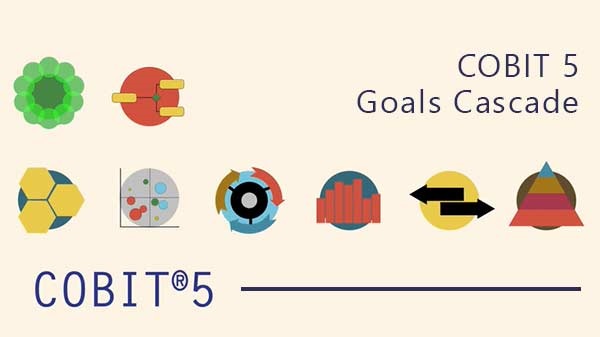The goals cascade is an important concept in COBIT 5 as it supports the translation of stakeholder needs into actionable strategy. The COBIT 5 goals cascade is the mechanism used to translate these needs into customized enterprise goals, IT-related goals, and enabler goals. This is essentially a top down approach.
In doing this we are taken through a process that allows us to use COBIT 5 effectively – so this ‘mapping’ of needs to goals is central to supporting alignment between an enterprise’s needs and IT solutions and services, and can be applied at several levels.
Using the goals cascade involves 4 steps:
1. Stakeholder Drivers Influence Stakeholder Needs
Stakeholder needs are influenced by strategy changes, the business/regulatory environment, new technologies, etc.
2. Stakeholder Needs Cascade to Enterprise Goals
Stakeholder needs can be related to a set of enterprise goals. The COBIT5 goals cascade nicely organizes these into the four balanced scorecard dimensions, with 17 generic goals that can also be easily mapped to specific organizational goals.
3. Enterprise Goals Cascade to IT Related Goals
Often, enterprise goals can only be achieved if the IT-related goals are met (where IT stands for Information and Technology). In the goals cascade, each of the 17 enterprise goals are mapped to a number of relevant IT-related goals. There are 17 IT-related goals and they are also organized into the four balanced scorecard dimensions.
4. IT-related Goals Cascade to Enabler Goals
In order to achieve IT-related goals, a number of enablers must be successfully applied. One of these enablers is processes. Similar to earlier steps in this cascade, each IT-related goal is then mapped to one or more processes. The COBIT 5 framework has 37 processes.
COBIT® 5 is a registered trademark of ISACA in the United States and other countries. ISACA neither supports nor endorses these videos.
IT Governance COBIT Video